https://kimherringe.com.au/printmaking/gelatin-plate-printmaking-recipe/
Author: beth
-
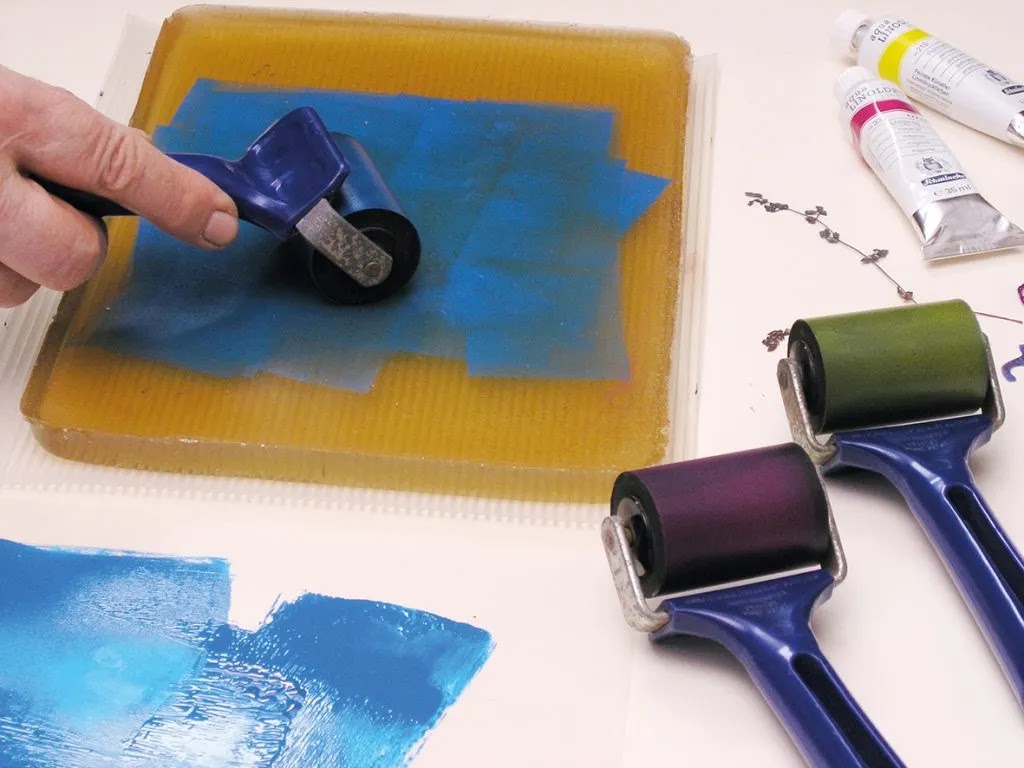
Gelatin printing
During my research around jelly artists I found out about gelatin printing, which I am definitely going to experiment with. It’s jelly all the way down. -
Liz Hickock
“San Francisco-based artist, Liz Hickok, works in an innovative creative style, mixing low and high tech to create immersive artworks that bring viewers into a whimsical and wondrous space. Using playful materials and intersecting photography, sculpture, video, and installation, Hickok makes art that intermingles science and nature. Her most recent projects use augmented reality and other interactive technologies, inviting her spectators to take a more personal approach to her art, and closing the gap between artist and viewer.”
San Francisco in Jell-O
“I drew inspiration for this project from my immediate surroundings in San Francisco, where the geological uncertainties of the landscape evoke uncanny parallels with the gelatinous material. I construct my own vision of city locations with props and backdrops as if they were small movie sets. These site-specific Jell-O installations introduce the viewer to a more physical experience involving smell, movement and the desire to taste. Because the sculptures decay over time, the photographs and videos remain as the only record of their existence.”
-
Gowanus Studio Jell-O Mold competition
Each year this studio hold a jelly mold comp. Artists who contribute are judged based on creativity, aesthetics and structural integrity.
-
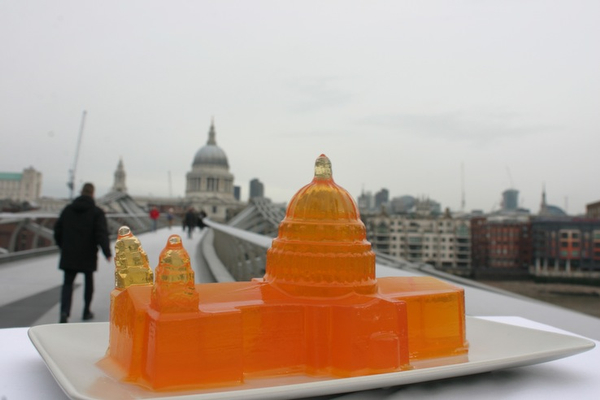
Bompas & Parr
Sam Bompass and Harry ParrBompas & Parr is a creative studio made up of artists, architects, chefs, designers, marketeers, strategists and technologists. Through consultancy, delivering Location Based Experiences (LBEs) and writing publications, the studio challenges the world around us with radical creativity and a thirst for provoking innovation. The studio works with cultural institutions, attractions, governments, developers and brands to deliver this work.There are some examples of their work below.St. Paul’s CathedralLondon-based artists Sam Bompas and Harry Parr have been pushing the limits of what can be done with jellies (the British term for anything set with gelatin) over the past few years. St. Paul’s Cathedral is one of the architectural creations featured in their new book Jellymongers, just out in the U.S.Neon Jelly Chamber, London, March 2011This neon jelly creation was made using the secret ingredient used to dye the Chicago River green each year. The installation was inspired by Antonin Careme, known as the “king of chefs and chef to kings,” who cooked for Napoleon, George IV, and Tsar Alexander, often moulding food into architectural shapes. -
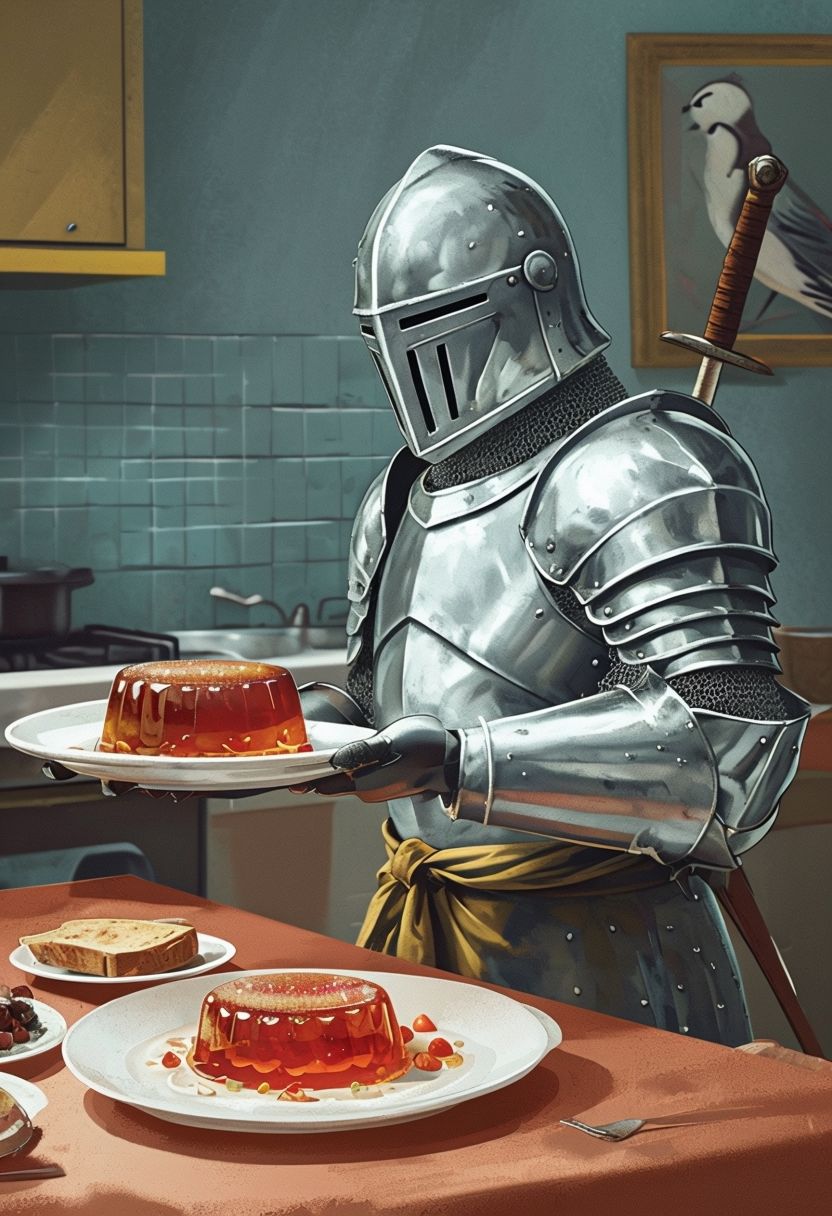
Kate Whyles: AI guest lecture
During our lecture Kate introduced us to Leonardo AI and Playground, software that employs AI in image generation and animation.
This is with a view to incorporating them in our Nottingham castle VR project. We had the opportunity to experiment with both for free and so I used some of my initial ideas for the project. See below.
Playground is pitched at a lower level then Leonardo AI, with the latter being at industry level.
Someone suggested Sora AI (https://openai.com/sora/) for my animated AI elements as it’s at the foreground of that emerging tech. Will do.
You can find both programs at:
-
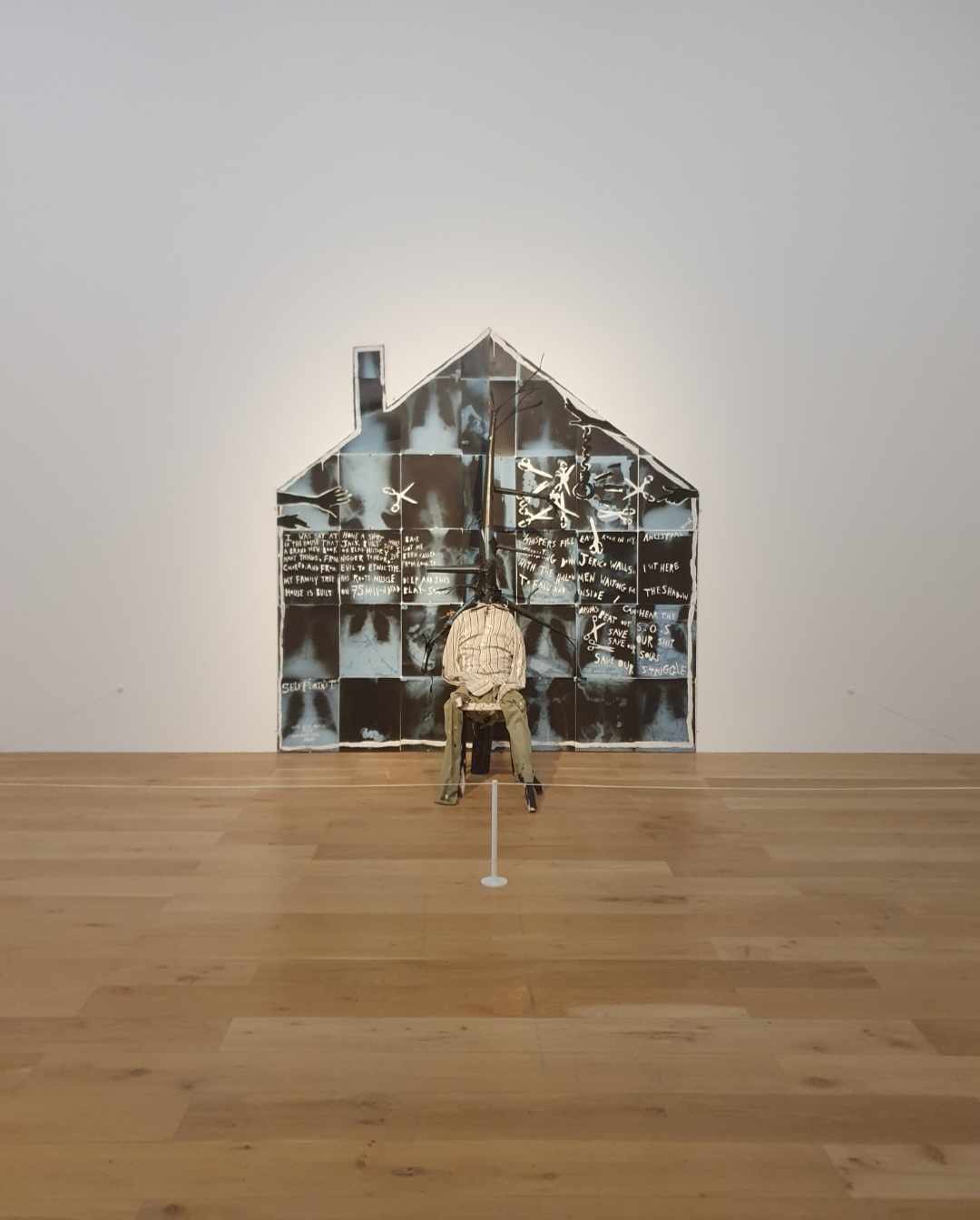
Donald Rodney: Visceral Canker, Nottingham Contemporary 2024
This retrospective exhibition of black activist artist Donald Rodney at Nottingham Contemporary was testament to the valuable role he played in the UK art scene. It included a huge body of work spanning video, sculpture, found objects, installation, painting and photography. It referenced his battle with sickle cell anemia, racism, black masculine identity and colonialism. His voice is as relevant today as it was when he was making his work; and this is testament to the importance of the conversations he tried to hold.
He was a pioneering Nottingham black artist, speaking out loudly about the inequality and racism in the art world and creating publications for peers and future black artists to help them navigate the system effectively.
He was involved in his work in an extremely intimate way, with parts of his skin, photos of his medical scars and video pieces made during his time spent bedbound due to ill health included in his works. The visceral yet accessible nature of his art makes his work impactful and commands that you pay attention to what he is trying to communicate. I understand what it means to want to include parts of yourself, both literal and metaphorical in your work, and the power and resonance this can give to a piece.
He wanted one of his installations to include his blood being pumped around colonial family crests painted on boards but wasn’t allowed due to concerns about this posing a health risk to members of the general public. An attitude which further highlighted the discrimination and endemic medical racism he and other black community members suffer. This reaction is in especially poor taste because the piece is talking about the blood of black slaves that built the British Empire.
He consistently held a lens up to racist and harmful perceptions of black male identity; something that he suffered the impacts of throughout his life. One of his pieces involved multiple slide projectors illuminating cut up images of black make faces in collage on a large scale. As the projectors cycled through, an everchanging blurred mishmash of black faces appeared on the gallery wall, referencing the racism faced by black males through police photofit profiling. It also cleverly evoked curiosity about the man behind the nose, eyes and chin that lit up the wall. Who were they? And what parts of them were denied and hurt by toxic systemic beliefs?
The time I spent talking with the gallery assistants highlighted what a massive undertaking it had been to collate and display his work. Not least because some of the mediums that he used are unique and therefore are devoid of script for preservation and display; for example a number of his paintings and sculpture include x-rays of his body gathered during treatment.
I was particularly struck watching interviews of him by how gentle, jovial and earnest he seemed. In my mind and heart, it generated an even more poignant relationship with his audience.
I left the gallery feeling a closeness to him. An empathy for his journey and admiration for his creativity and determination to tell his story and to connect with his audience.
Photography was not allowed in some areas of the exhibition. Regrettably one of this areas included the wheelchair he sat in for a lot of his adult life that had been modified using motion sensors so that it could move without risk of collision, empty, around the gallery space. Carrying his ghost.
Below are some of my favourite pieces that I could document.
You can read more about his works and the exhibition at https://www.nottinghamcontemporary.org/whats-on/donald-rodney-visceral-canker/ -
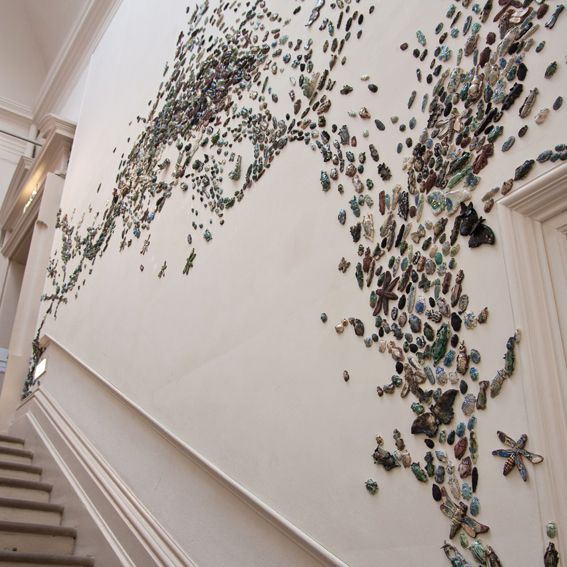
Anna Collette Hunt: Entomological artist
Anna Collette Hunt was invited to guest lecture for our group. Unfortunately I missed her visit but was thankfully able to watch a recording made by a peer. I have admired her ever since I saw her beautiful ceramic insect swarm installation in the stairwell of Nottingham Castle a few years ago.Her piece, consisting of over 10,000 ceramic insects, was created and installed following her winning a prize in an open exhibition at the castle after she completed her Fine Art studies at Nottingham College and Nottingham Trent University.I find her success story really inspiring and motivating. It reinforces my drive for making work and for growing my skills and portfolio. I feel so excited and grateful to be given opportunities through this course to exhibit in places like the castle. It is a frankly majestic space, the curator is really open to ideas and it’s the second biggest gallery in Nottingham. I just want to step into showing work more and more. No one is going to chase this for me. I need to show up to be in with a chance of success similar to Anna’s. And I am absolutely ready to try.Anna is a fan of collaboration in her artistic practise and advocated that we seek it out too, explaining that it pushes us to try new approaches in our work. I agree and am looking forward to exploring how I can collaborate effectively with other creatives. She also stressed the importance of capturing our work professionally using video and photography. She explained that it is pivotal to successful self promotion and brought up a salient point, that in this age, more people are likely to view images of our work remotely than see the pieces themselves.She exhibits but also has a commercial branch to her work, selling through her website. I think having diverse income streams like this is savvy and will give you more financial buffer as an artist.Researching her as I have been, it is abundantly clear that she has worked very hard at (or paid someone else to work very hard at) generating a cohesively branded, sleek and navigable online presence. This feels essential as a contemporary artist because it’s a significant point of contact for your audience. I need to look into this more I think and educate myself on website design. Developing the zine and collective website will give me ample opportunity to do so.More about Anna and her work can be found at https://www.annacollettehunt.com/
-
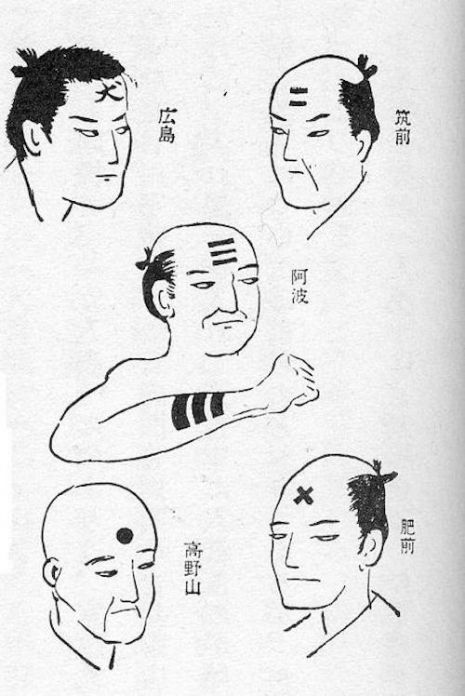
Sean Pendergast: Tattooist and historian
Sean Pendergast was invited to talk to us as a local contemporary creative. The passion and knowledge he conveyed about his artform was so visible it was a genuine joy to behold. I found what he shared fascinating and it gave me cause to reflect on my own work and my exploration of transgression as an artist. It was also inspiring to see a creative be truly adaptive in what they do and how they pursue their career; remaining responsive to their situation and not defeated by adversity.
I have written a summary of his talk below.
After tattooing for 20 years, in 2023 he took a step back due to a lack of work in the industry. He decided to curate a collaborative global exhibition that took tattoos out of their preordained back alleys and placed them in an elevated gallery space. He wanted to celebrate the art form, educate the public about aspects of it’s history and dismantle the stigma the industry, it’s artists and customers can suffer.
Attitudes on tattooing, like all art, are always dictated by current cultural values and in that way are chameleonic; what is perceived as taboo in one era or by one class group is deemed valuable and even necessary, by another.
The oldest remaining tattoo parlour, Razook Tattoos, have been open in Jerusalem since 1300. The below exert is taken from their website https://razzouktattoo.com/:
‘Our History
Tattooing is an art that the Razzouk family brought with them to Palestine five centuries ago bringing it with them from Egypt. The family came to the Holy Land for pilgrimage but then stayed for trade and for the Tattooing tradition that had existed, and since this art has been in the family for 700 hundred years starting in Egypt, the family started tattooing pilgrims for a living.
Our ancestors used tattoos to mark Christian Copts in Egypt with a small cross on the inside of the wrist to grant them access to churches. Those without it would have difficulty entering the church; therefore, and from a very young age (sometimes even a few months old) Christians would tattoo their children with the cross identifying them as Copts.’
This is one example of many that references the ancient and rich tradition of tattooing across many cultures. Mark making, including marking on our own skin, is as old as mankind himself.
When tattooing was rediscovered by the Europeans in the 1700’s, there began a trend of bringing heavily tattooed people back to parade thorough high society. I wish I could say this was done with respect and sensitivity, but unfortunately they were treated as a novelty. A party trick. There is a poetic irony worth mentioning here. The chemicals used in the photography at the time had the effect of not developing the tattoo ink in the skin, so a lot of the portraits of said heavily tattooed folk are literally whitewashed, with a large chunk of their marks left out of the image. The reality is that a lot of historical photographs don’t show the tattoos on the people being captured.
Japanese attitudes towards tattoos are a perfect example of the fluidity of transgression in the artform. The culture initially invented tattooing as a punishment. Termed Irizumi Kai, this tradition had clear coding for both the type of mark used and their placement on the body; the higher on the body, the more severe the crime. Three marks equalled an execution; this is actually the first recorded reference to the “3 strikes and you’re out” philosophy.
The caste system was introduced to Japan by the ruling class to repress the developing self-made middle classes. This meant that social groups like farmers and merchants fell into the “undesirable caste” and were therefore forbidden from displaying wealth in any way, including having artwork in their homes. The woodblock carvers of the time saw a niche opportunity and started translating their images into carvings that could be tattooed. And so the “undesirables” could now wear art on their bodies exploiting a loop hole in the system and subverting the limits superimposed upon them. In this way tattoos became a subculture status symbol and were this viewed positively by many. These all over body tattoos were also a clever way to mask any pre-existing penal tattoos, thus making it possible for criminals to gain a clean slate and operate undetected in society. And so they became popular for a second more sinister reason too.
Whatever the specific cultural origin of tattooing being discussed, it tends to involve a heavily coded language with lots of semiotics. In South Polynesian tattooing culture, every tattoo has it’s correct place, design, gender and meaning and also has to be done correctly, by the right artist, in order to be deemed acceptable. Mauri culture tattoos cannot be done unless you can evidence heritage that entitle you to wear any given particular markings; apart from in certain circumstances where respect and appreciation for the culture has been witnessed.
American and British traditional navy tattoos include simularly clear symbolism but have a completely different focus; looking to story telling, honouring superstitions and celebrating achievement and status. For example, sailors believed that having a pig or rooster tattooed on their body would assure their survival in the face of shipwreck as these animals were often observed making it to dry land in such crisis.
One of the most interesting aspects of tattooing that Sean discussed was Collier Stripes; also know as trauma tattoos. If a miner is caught in a mine cave in, their wounds unavoidably become saturated with coal dust. As these heal over, the carbon in the coal embedds in the skin, creating a blue/ black line scar. The more trauma tattoos someone had, the more likely they were to get fired by the pit foreman. This is because it was an indication of the onset of black lung, a terrible illness and one that required the pit to cover the subsequent significant medical costs. Miners would therefore get tattoos to cover up their collier stripes in order to keep their jobs. Furthermore, perfectly healthy miners with no cave in trauma would get tattoos in solidarity, to make it harder for pit managers to distinguish who posed a financial burden to the mine. Sean was in the process of organising an exhibition with Mansfield Museum about this at the point of our talk.
In recent decades, tattoos have become more widespread in Western culture and are now considered a mode of personal expression more than anything else. This is largely due to a reduction in their associated stigma, which was diluted by multiple factors; for example, social media platforms offering a mechanism for sharing contemporary tattoo culture, tattoo equipment improving and celebrity culture legitimizing the artform.
Whatever your attitude towards them is, it is impossible to deny that tattoos offer a perfect reference for how temporary and intricate cultural attitudes and values can be. They are an expression of psyche and as such hold enormous value, both currently and retrospectively.
You can find more of Sean’s work at https://darklight-digital.com.
-
Sketch, prick, pounce and paint (with egg tempera)
I really enjoyed learning about this traditional fresco painting technique; mandated by a lack of access to paper at the time it was being developed as a discipline.I can see real value in this process and refining the craft over time.It command I reflect on my current privilege, where I as an artist have relatively unfettered access to a lot of the materials I would like to use.Making the tempera by mixing egg yolk and mineral pigment powder was satisfying, It is profoundly opaque as a medium and dries very quickly; I would like to experiment more with it.The whole workshop gave me a sincere depth of respect for artists who use(d) this process. It is a true craft with many facets to it and is extremely labour intensive. -
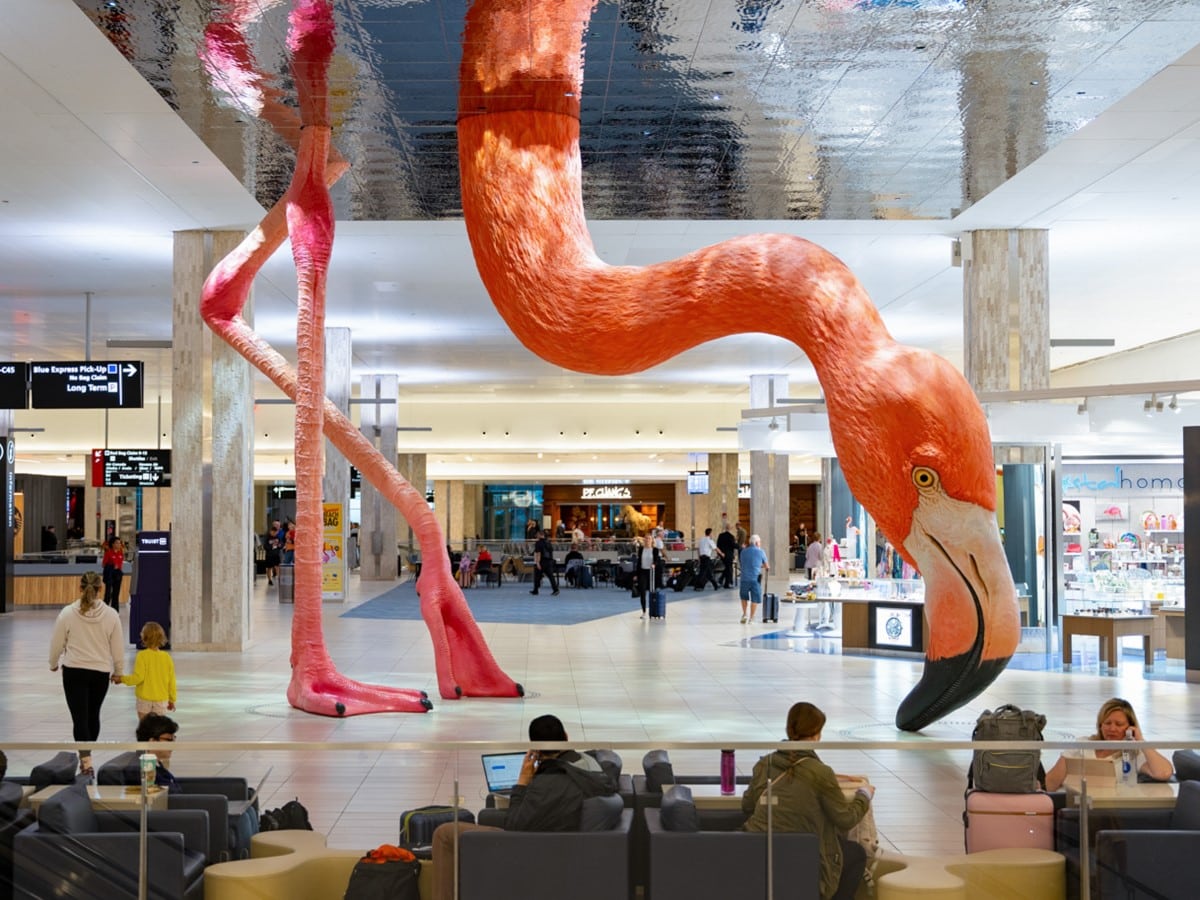
Matthew Mazzotta, ‘Home’, @ Tampa International Airport
Considering the opportunity to put a large scale VR installation in the castle led me to researching artists who have done similar.
The first artist that came to mind was Matthew Mazzotta.
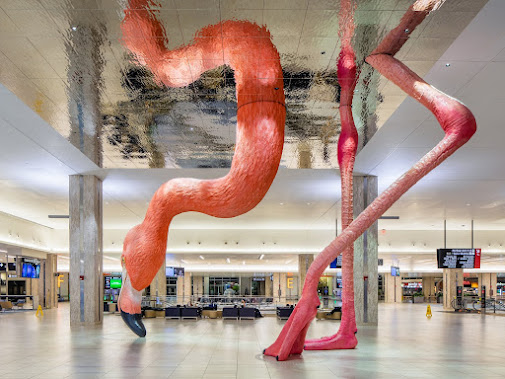
Taken from his press release:
“Matthew Mazzotta has worked at the intersection of art, activism, and urbanism, focusing on
the power of the built environment to shape our relationships and experiences. Matthew
Mazzotta’s public projects have received international art and architecture awards such as the
Architizer A+ Award, Azure’s AZ Award, The WAN Award, and six of his projects have been
recognized by the Americans for the Arts. He has won four of the major international
Architecture awards, as well as, “Architecture Project of the Year” by the Dezeen Awards at the
Tate Modern in London.
Flights arrive and depart from Tampa International Airport, full of travellers leaving their homes,
returning back home, going to a new home, or simply to a place that feels like home. The
concept of “home” is not only for people—Florida is also home to an abundance of wildlife.
HOME is a site-specific art installation that gives travellers time and space to take a deeper look
at a bird whose image appears across Florida—the flamingo. This floor-to-ceiling immersive
installation gives viewers the impression they are underwater with the flamingo as it looks for
food. The exaggerated scale of this pink bird transports us into its world and reminds us that we
all share the same home.”
Looking up, the viewer sees a ceiling made of a specialized surface that mimics water, while
hidden projectors create water-like dappling light on the bird and floor. The scale of HOME is
designed to be an exciting experience close up, as well as seen from the many vantage points
throughout the entire terminal. The overall effect is one of wonder, contemplation, reflection, and
amusement, bringing joy to those passing through the terminal on their way to their destination.
HOME draws people into this immersive experience, where they will find themselves bathed in
changing lights, posing with a giant bird, sharing photos, and enjoying being together in this
whimsical and otherworldly atmosphere.
Earlier this year, the big pink bird was named Phoebe after an international naming contest with
65,000 entries worldwide.”
More information about his work can be found at https://www.matthewmazzotta.com/





































